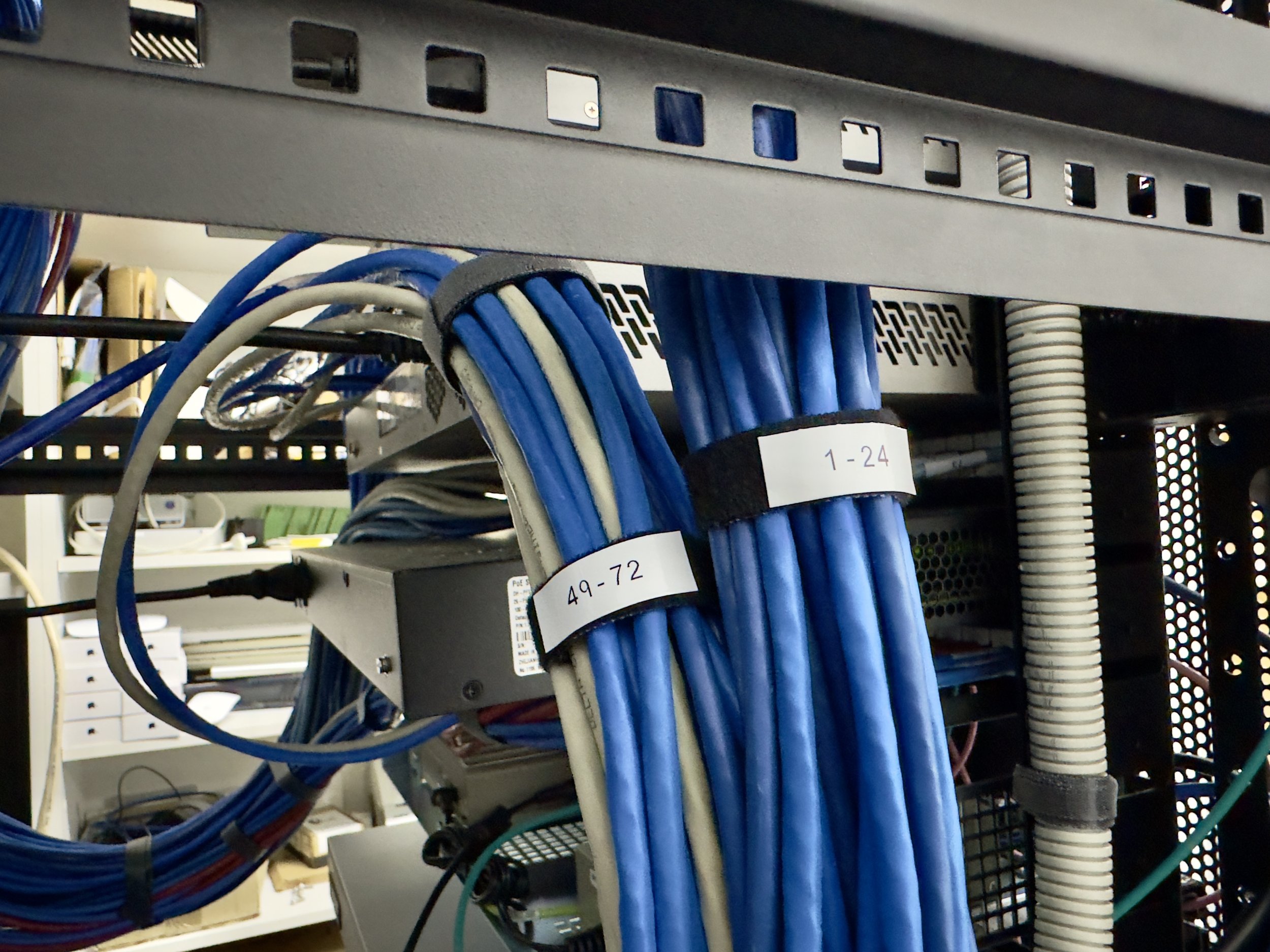Cable Management Techniques for Server Racks
Introduction
Effective cable management is a critical component in the maintenance and operation of server racks. It not only ensures a neat and organized appearance but also facilitates easier access for troubleshooting, reduces the risk of accidental disconnections, and optimizes airflow within the rack.
Why Cable Management Matters
- Airflow Optimisation: Properly managed cables can significantly improve air circulation, reducing the risk of overheating.
- Ease of Maintenance: Organized cables simplify the process of identifying and accessing specific connections.
- Safety and Compliance: Good cable management reduces the risk of tripping hazards and adheres to fire safety regulations.
Basic Principles of Cable Management
- Plan Ahead: Consider future expansions and leave room for additional cables.
- Label Everything: Clearly label both ends of each cable for easy identification.
- Colour Code: Use different colour cables or markers for different types of connections.
Tools for Effective Cable Management
- Velcro Ties: Reusable and gentle on cables, ideal for bundling.
- Cable Trays and Ladders: Provide a structured pathway for horizontal and vertical cable runs.
- Cable Managers: Vertical or horizontal organisers that keep cables tidy and prevent tangling.
- Cable Sleeves: Protective covers that consolidate multiple cables into a single tube.
Techniques for Organising Cables
- Vertical and Horizontal Segregation: Group and route cables based on their destination (e.g., power, data).
- Avoid Overcrowding: Ensure cables aren’t tightly packed, as this can restrict airflow and cause wear.
- Service Loops: Leave extra length for easy removal or repositioning of equipment.
Advanced Strategies
- Custom-Length Cables: Using cables of the right length eliminates excess slack and maintains a cleaner look.
- Structured Cabling Systems: Implement a standardized cabling system that supports hardware from various vendors.
- Upgrade to Sliding Rails: For server racks, use sliding rails for easier access to the rear of equipment.
Impact on Troubleshooting and Maintenance
- Faster Issue Resolution: Well-managed cables allow technicians to quickly identify and address issues.
- Reduced Downtime: Organised cables minimize the risk of accidental disconnections during maintenance.
- Documentation: Maintain a detailed map or photograph of cable layouts for reference.
Conclusion
In the world of server rack management, cable organization is not just about aesthetics; it’s a vital practice that impacts the efficiency, safety, and functionality of IT environments. By adopting these advanced cable management techniques, IT professionals can ensure a more reliable and maintainable server infrastructure.
Further Reading and Resources
- Check out our suggested patch cable colour scheme.

